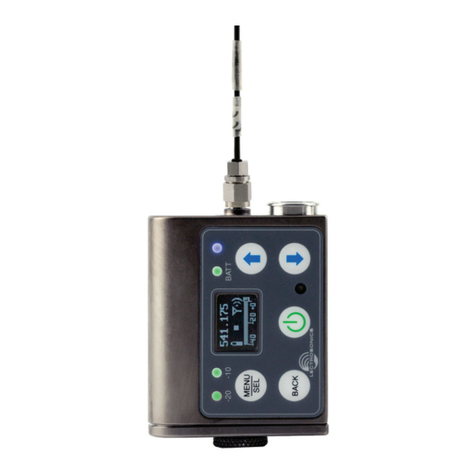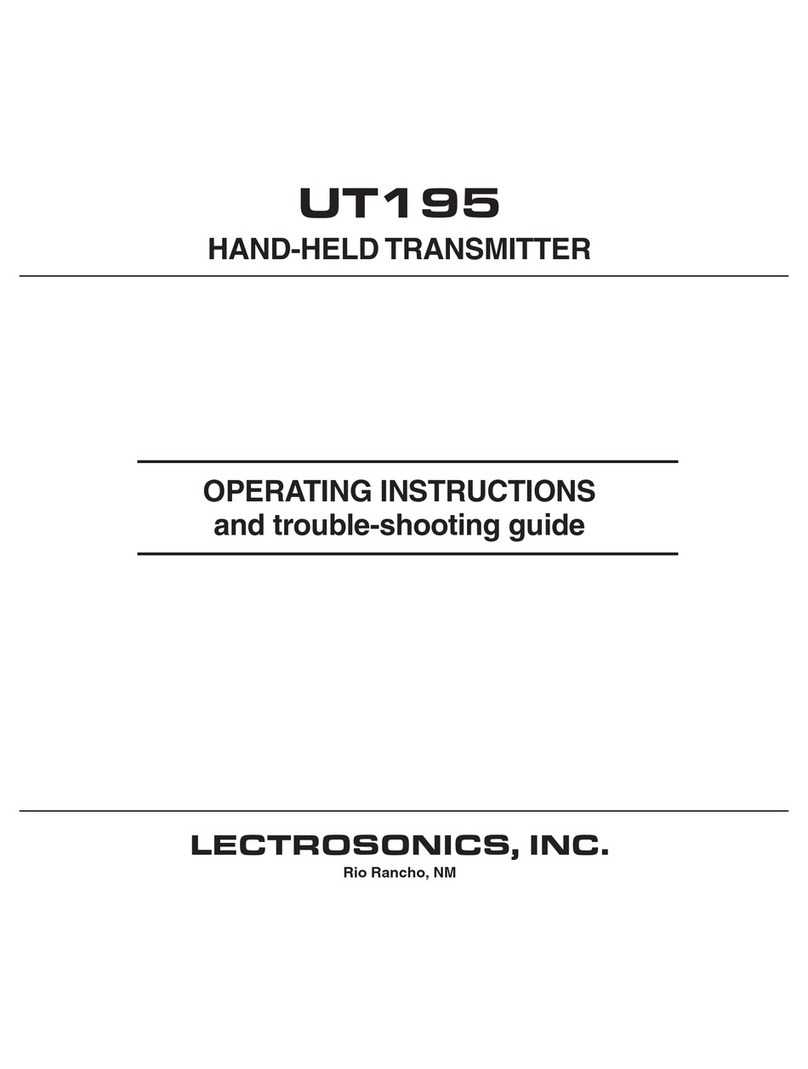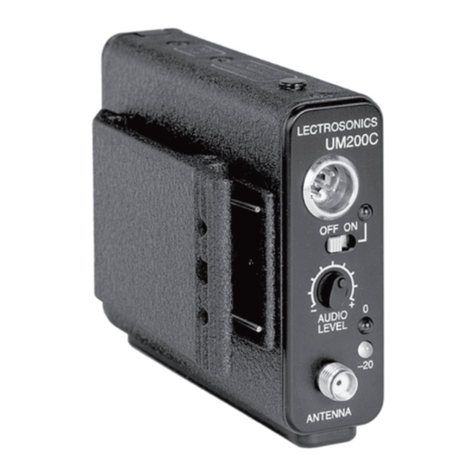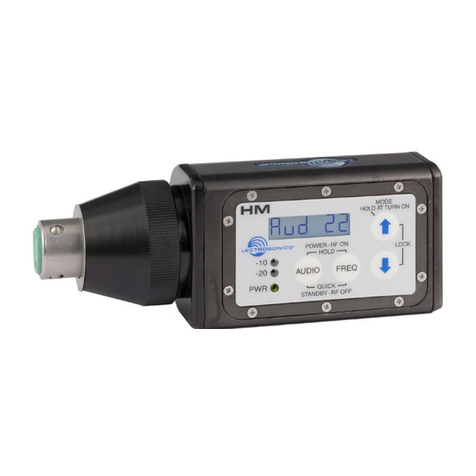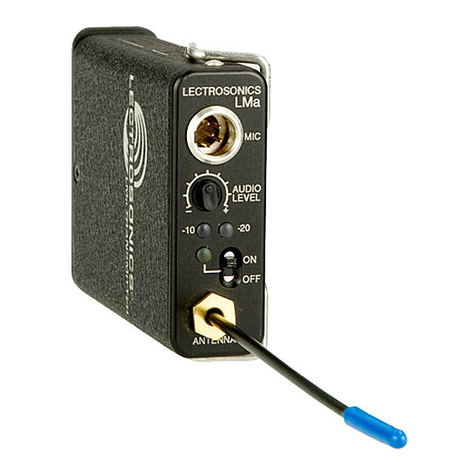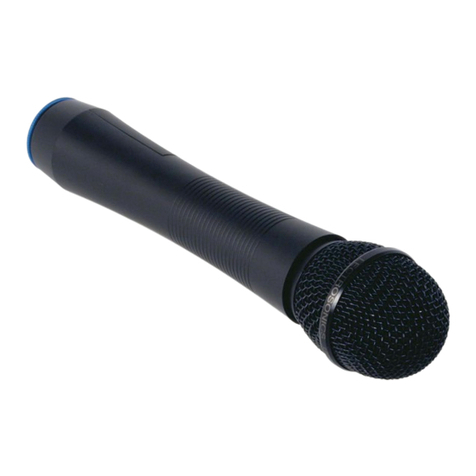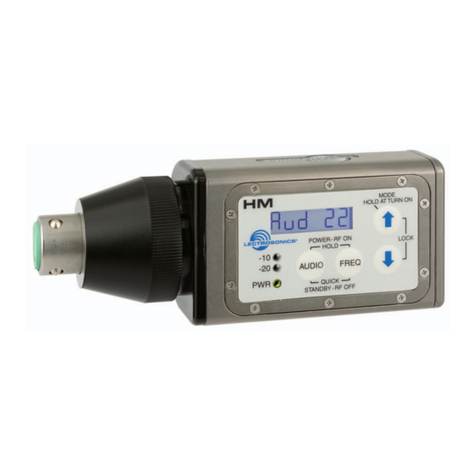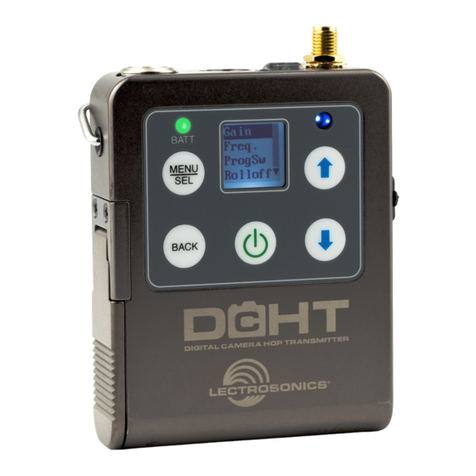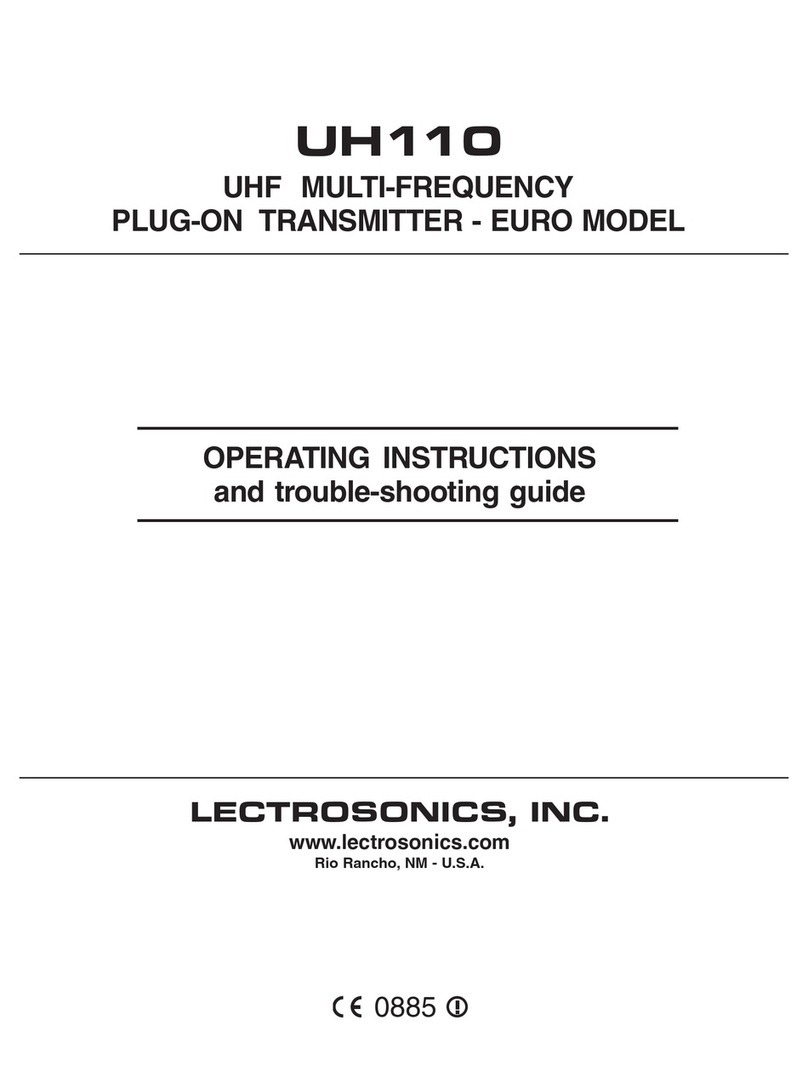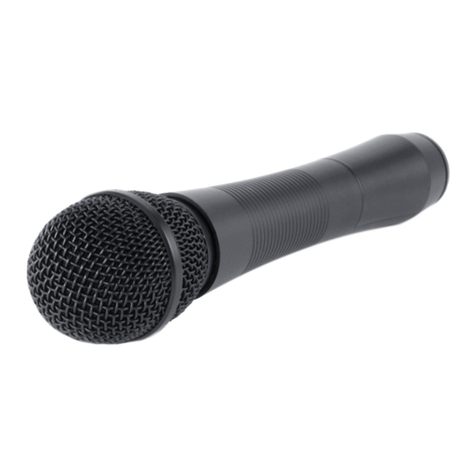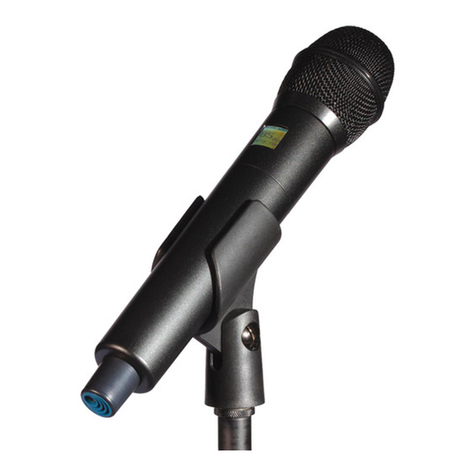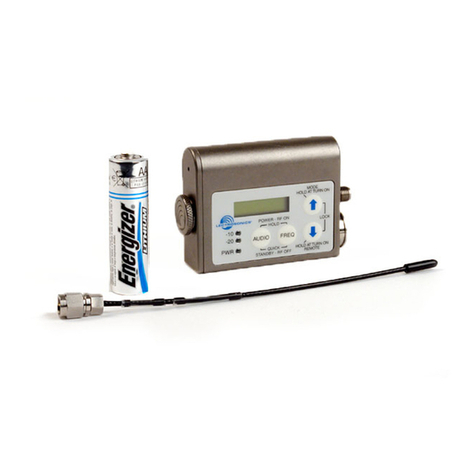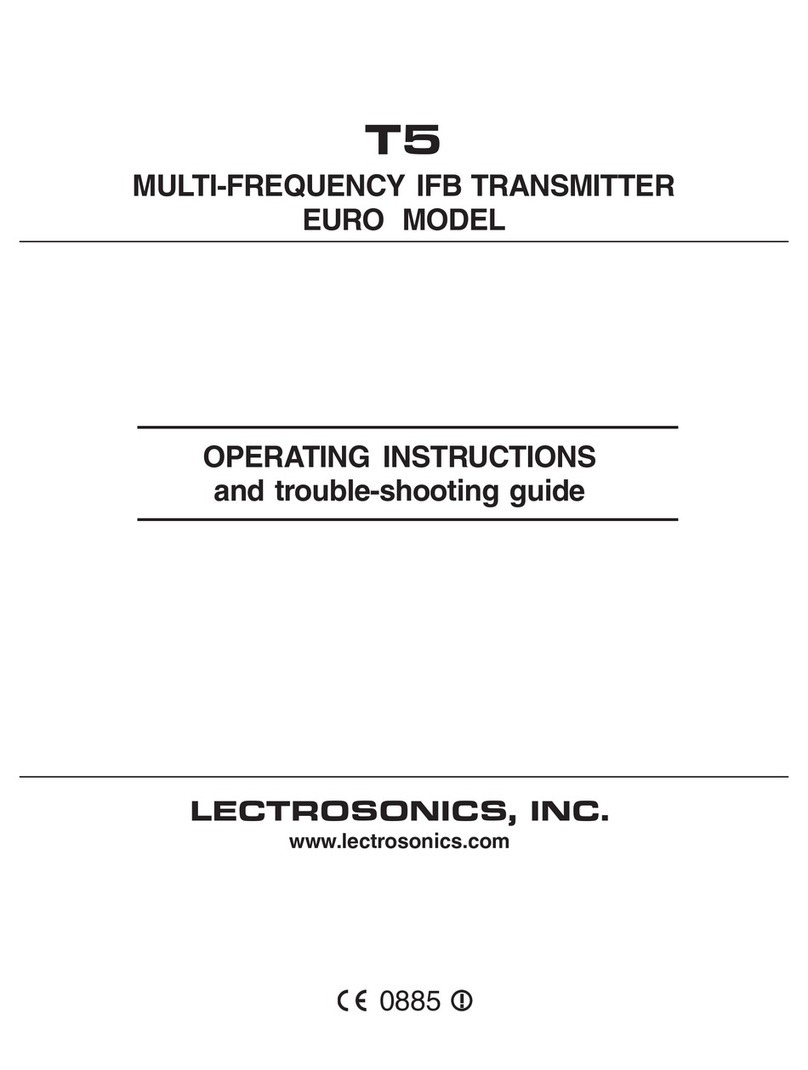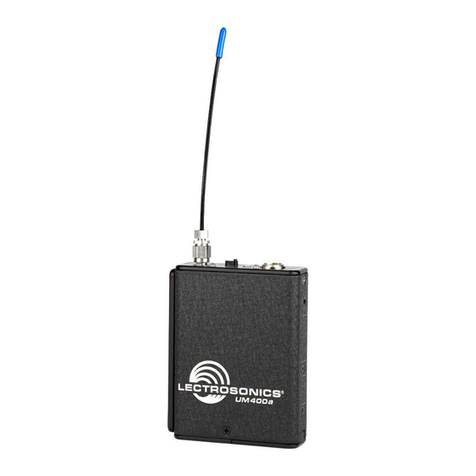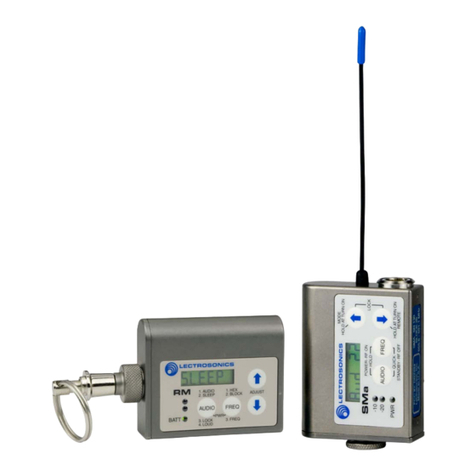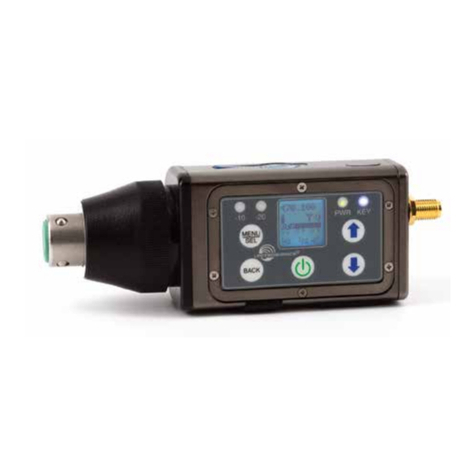
HMa, HMa-941, HMa/EO1, HMa/E02, HMa/E06, HMA/E07-941, HMa/X
LECTROSONICS, INC.
10
then use the UP and DOWN arrow buttons to adjust the
setting.
Adjusting the Input Gain
The control panel Modulation
LEDs indicate the modulation
level and limiter activity. This gain
adjustment matches the transmitter gain with the micro-
phone’s output level, the user’s voice level and the
position of the microphone. Once set, the transmitter’s
audio level setting should not be used to control the
volume of your sound system or recorder levels. The
audio input level can be set with the unit in Standby
Mode or while powered up in normal operation.
Signal Level -20 LED -10 LED
Less than -20 dB O O
-20 dB to -10 dB Green O
-10 dB to +0 dB Green Green
+0 dB to +10 dB Red Green
Greater than +10 dB Red Red
Note: Voice levels vary significantly between
different people. If several different people will
be using the transmitter and there is not time to
make the adjustment for each individual, adjust
it for the loudest voice.
1) With the HMa powered o, insert the microphone
plug into the XLR Input Jack, aligning the pins and
ensuring that the connector locks.
2) Place the transmitter in the Standby Mode, or if
the unit is to be powered up and adjusted, mute
the main sound system prior to powering up the
transmitter.
3) Position the microphone in the location where it
will be used in actual operation.
4) Observe the audio level LEDs while speaking or
singing into the microphone at the same voice
level that will be used during use. While holding the
AUDIO button, press the UP or DOWN arrows until
the both the -20 and -10 LEDs glow green, with the
-20 LED ickering red on louder peaks. This will
optimize the signal to noise ratio of the system with
full modulation and adequate headroom to prevent
overload and audible compression of signal peaks.
Note: Setting the audio level too high reduces
the dynamic range of the audio signal. Setting
the audio level too low may cause hiss and
noise in the audio.
5) If the unit was set up in Standby Mode, it will be
necessary to turn the transmitter o, then power it
up again in normal operation so the RF output will
be on. Then the other components in the sound or
recording system can be adjusted.
Adjusting the Low Frequency Roll-o
The roll-o frequency can be set
to 35, 50, 70, 100, 120 or 150 Hz.
This setting is often made while
listening to the audio while selecting the setting.
Selecting the Phantom Power Supply
The transmitter input jack can provide phantom power
for the attached microphone if needed, with voltages
at 5, 15 or 48. Phantom power will consume a slight
amount of battery power, so it can also be turned o.
Selecting the Phantom Power Supply (Audio Screen
Menu)
The transmitter input jack can provide phantom power
for the attached microphone if needed, with voltages
at 5, 15 or 48. Phantom power will consume a slight
amount of battery power, so it can also be turned o.
With the transmitter powered on and in the normal or
standby mode, press and hold the audio button and
observe the LCD. Release the button and press and
hold it again. Repeat this process until the display
indicates the PH.
Once you get to the PH setting, keep the AUDIO but-
ton pressed, then use the UP and DOWN arrow keys to
cycle through the available settings (o, 5, 15, 48 volts)
until the desired setting is displayed.
When you release the AUDIO button, the setting will be
stored to the value you selected.
About the Phantom Power Supply
Three phantom voltages are selectable from the control
panel. The voltages are:
• 5 Volts for lavaliere microphones,
• 15 Volts for some professional mics requiring
high current and for many common stage mics
that will operate over a wide phantom Voltage
range of 12 to 48 Volts. With the proper adapter,
this position can also be used with T power
microphones. See our web site for details on
nding or making the proper adapter.
• 48 Volts for microphones that do in fact require a
supply greater than 18 Volts. (See following for a
discussion of why 42 and not a “true” 48 Volts.)
For longest battery life use the minimum phantom
voltage necessary for the microphone. Many stage
microphones regulate the 48 Volts down to 10 Volts
internally anyway, so you might as well use the 15 Volt
setting and save some battery power. If you are not
using a microphone for the input device, or are using a
microphone that does not require phantom power, turn
the phantom power o.
Phantom power should only be used with a fully oat-
ing, balanced device such as most microphones with
a 3-pin XLR connector. If you use the phantom power
with an unbalanced device or if pins 2 or 3 are DC con-
